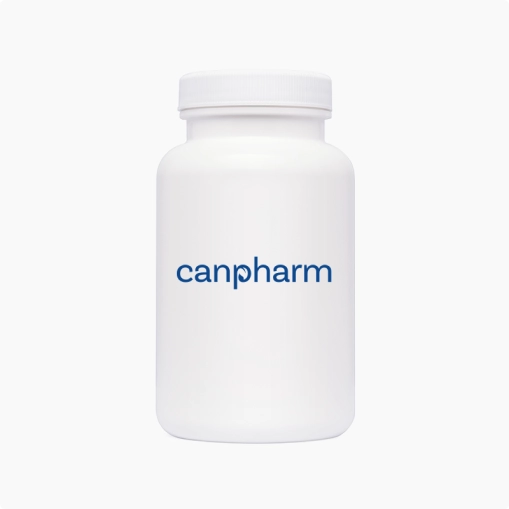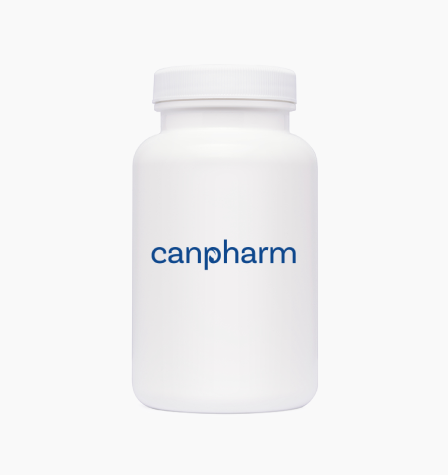
Austedo XR (Deutrabenazine)
| Dose | Size & Price | Qty |
|---|
-
Description
-
Reviews (0)
-
Related Products
-
Related Conditions
Fact Table
| Fact Table | |
|---|---|
| Formula | C19H21D6NO3 |
| License | FDA approved (2017); AUSTEDO XR approved in 2023 |
| Bioavailability | Not publicly specified for XR; high oral absorption |
| Legal status | Prescription only (Rx) |
| Chemical Name | (RR,SS)-1,3,4,6,7,11b-hexahydro-9,10-di(methoxy-d3)-3-(2-methylpropyl)-2H-benzo[a]quinolizin-2-one |
| Elimination half-life | ~9–10 hours |
| Dosage (Strength) | 6 mg, 12 mg, and 24 mg extended-release tablets (once daily) |
| Pregnancy | Use only if clearly needed |
| Brands | Austedo XR (Teva Pharmaceuticals) |
| Protein binding | ~60–68% |
| PubChem CID | 73437646 |
| MedlinePlus | a617022 |
| ChEBI | Not listed |
| ATC code | N07XX16 |
| DrugBank | DB12161 |
| KEGG | D10701 |
| Routes of administration | By mouth (oral extended-release tablets) |
Austedo XR (Deutetrabenazine) is a once-daily, extended-release oral medication used in the treatment of chorea associated with Huntington's disease and tardive dyskinesia in adults. Deutetrabenazine is a vesicular monoamine transporter 2 (VMAT2) inhibitor that works by reducing the uptake of monoamines such as dopamine into synaptic vesicles, helping to regulate abnormal movements.
The extended-release formulation of Austedo XR offers a simplified dosing regimen compared to the immediate-release version, potentially improving adherence and minimizing fluctuations in symptom control.
Directions
Austedo XR should be taken orally once daily, in the morning, with food. The dosage must be individualized based on patient tolerability and clinical response. For patients switching from Austedo (immediate-release), the total daily dose is typically converted to the equivalent Austedo XR dose.
Initiation and titration should follow the recommended schedule provided in the prescribing information. Dose adjustments are necessary in patients with hepatic impairment or when used in combination with strong CYP2D6 inhibitors. Tablets must be swallowed whole and should not be chewed, crushed, or split.
Ingredients
The active ingredient in Austedo XR is deutetrabenazine. The formulation includes inactive ingredients such as lactose monohydrate, hypromellose, magnesium stearate, and other excipients appropriate for extended-release delivery. The tablet film coating contains components like titanium dioxide and various colorants depending on the dosage strength.
Cautions
Caution is advised in patients with a history of depression, suicidal ideation, or other psychiatric disorders, as Austedo XR may exacerbate these conditions. Regular monitoring for new or worsening depression and suicidal thoughts is recommended. Dose adjustments may be required for poor CYP2D6 metabolizers or when used with strong CYP2D6 inhibitors.
Patients with prolonged QT intervals or cardiac arrhythmias should be monitored due to potential effects on cardiac conduction. As the drug can cause sedation and somnolence, patients should be advised about the risk of performing hazardous activities such as driving or operating machinery.
Contraindications
Austedo XR is contraindicated in patients with Huntington's disease who are actively suicidal or have untreated or inadequately treated depression. It should not be used in individuals with hepatic impairment or those taking monoamine oxidase inhibitors (MAOIs) or reserpine. A minimum 20-day washout is recommended after discontinuing reserpine before initiating Austedo XR.
Side Effects
Reported side effects of Austedo XR include:
- Somnolence
- Fatigue
- Diarrhea
- Dry mouth
- Insomnia
- Anxiety
- Akathisia
- Depression
- Nausea
- Upper respiratory tract infection
Suicidal ideation and behavior have also been reported, particularly in patients with Huntington's disease. All patients should be monitored closely throughout treatment.
Frequently Asked Questions about Austedo XR (Deutetrabenazine Extended-Release)
What is Austedo XR used for?
Austedo XR is used to treat chorea associated with Huntington’s disease and tardive dyskinesia in adults. It is the extended-release version of deutetrabenazine, designed for once-daily dosing.
How is Austedo XR different from regular Austedo?
Austedo XR is taken once daily and releases the medication slowly throughout the day, whereas the original Austedo is taken once or twice daily. Both contain the same active ingredient and are used for the same conditions.
How should Austedo XR be taken?
Austedo XR should be taken once daily in the morning with food. The tablet should be swallowed whole and not crushed, chewed, or split, as this may affect the extended-release mechanism.
What are the common side effects of Austedo XR?
Common side effects include sleepiness, fatigue, diarrhea, dry mouth, and insomnia. Some people may also experience anxiety or restlessness, especially when starting or increasing the dose.
Can Austedo XR affect mood or mental health?
Yes, Austedo XR may increase the risk of depression or suicidal thoughts, particularly in individuals with Huntington’s disease. Close monitoring for changes in mood or behavior is important during treatment.
Who should avoid taking Austedo XR?
Austedo XR should not be used in people with severe liver problems, active suicidal thoughts, untreated depression, or those who have taken monoamine oxidase inhibitors (MAOIs) or reserpine recently.
How long does it take for Austedo XR to start working?
Some symptom relief may occur within the first few weeks, but full benefits can take up to 8 weeks or more, depending on dose adjustments and the patient’s response to treatment.
Does Austedo XR interact with other medications?
Yes, it may interact with drugs that affect the CYP2D6 enzyme, such as fluoxetine or paroxetine. Dose adjustments may be needed, and patients should inform their healthcare provider of all medications they are taking.
What should I do if I miss a dose of Austedo XR?
If a dose is missed, it should be taken as soon as remembered the same day. If it's the next day, skip the missed dose and take the regular dose at the usual time. Do not double up to make up for a missed dose.
Is Austedo XR suitable for long-term use?
Yes, Austedo XR is designed for long-term management of movement disorders, but it requires ongoing medical supervision to monitor for side effects, mental health changes, and continued effectiveness.
